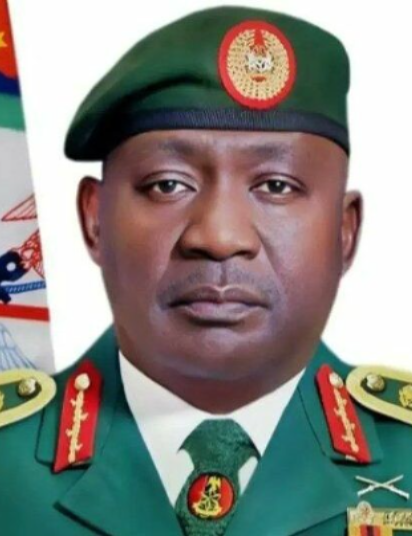
By Isiaka Mustapha, CEO/Editor-in-Chief, People’s Security Monitor
In the face of mounting security challenges, shifting combat strategies, and growing calls for unity among Nigeria’s armed forces, the military has transitioned into a new era marked by cohesion and strategic focus. This transformation is largely credited to the leadership of General Christopher Gwabin Musa, the Chief of Defence Staff. Under his guidance, the military’s internal structure has been reformed, and Nigeria’s defence system has emerged as a leading model of inter-service cooperation across Africa.
Prior to General Christopher Gwabin Musa’s leadership as Chief of Defence Staff, Nigeria’s military services, the Army, Navy, and Air Force, functioned in isolation, each following its own chain of command with minimal coordination. This compartmentalized approach fostered inter-service rivalry, disrupted joint operations, and diluted the overall effectiveness of national defense efforts. The absence of unified strategic planning, coupled with poor inter-agency communication, created operational blind spots, especially detrimental in counterinsurgency and asymmetric warfare environments. As a result, the Armed Forces struggled to present a cohesive front against evolving internal security threats.
Recognising these critical shortcomings, General Musa adopted a reform-driven approach rooted in harmonisation, interoperability, and unified command. From his first day in office, he emphasized that division within the ranks undermines military strength. He spearheaded a shift from superficial collaboration to genuine inter-service integration, making synergy a central pillar of military operations.
Under his leadership, the Defence Headquarters became a hub of real-time operational coordination. General Musa institutionalised joint training, intelligence sharing, and mission planning, ensuring that all service branches operate with a unified strategy. Through his initiatives, collaboration transcended rhetoric and became embedded in the military’s structure and daily practice.
One of the cornerstones of General Musa’s reforms was the establishment of a theatre command system. In regions such as the Northeast (Operation Hadin Kai) and the South-South (Operation Delta Safe), this structure unified the Army, Navy, and Air Force under a single operational umbrella. It replaced fragmented operations with cohesive joint execution, improving response times, resource
management, and battlefield outcomes.
Equally transformative was his overhaul of logistics coordination. Previously, equipment deployment, troop movements, and emergency support were handled separately by each branch. Musa introduced central oversight, creating a streamlined logistics framework that significantly improved operational efficiency across challenging terrains and volatile regions.
To further enhance joint operations, General Musa created Integrated Joint Task Forces. These multi-service units, comprising personnel from all three branches, operate under unified leadership in high-risk zones. Their collective strength has resulted in notable successes against insurgency, oil theft, and violent extremism.
Understanding that modern warfare depends on accurate, real-time intelligence, General Musa established fusion centers that integrate data from military and civilian intelligence agencies, including the DSS and the Nigeria Police. These hubs now deliver actionable intelligence directly to troops on the ground, bridging the information gaps that once hampered missions.
Technological integration has also been a hallmark of his leadership. Musa championed the deployment of surveillance drones, satellite imaging, and other advanced tools operated jointly by personnel across service branches. These technologies have enhanced battlefield visibility and accelerated decision-making, particularly in remote and conflict-prone areas.
Beyond enhancing combat capability, General Musa placed strong emphasis on cultivating a unified military identity. Training institutions like the Armed Forces Command and Staff College, Jaji, and the National Defence College, Abuja, were reformed to promote joint doctrinal education. Young officers are now trained together from the outset, fostering early inter-service cooperation and nurturing a future leadership cadre grounded in unity.
This integrated training philosophy has reshaped military culture. Officers no longer rise through isolated service pipelines but are groomed with a mindset focused on collaboration and joint strategic thinking, ensuring the longevity of General Musa’s harmonisation legacy.
Another significant dimension of his reform agenda is the military’s unified civil response. Whether in disaster relief, humanitarian crises, or medical outreach, the Armed Forces now operate through coordinated, cross-service action. From flood evacuations to peace missions and public health interventions, all branches now contribute under a single command structure, reinforcing the military’s value beyond combat.
Admittedly, uniting historically independent institutions like the Army, Navy, and Air Force was not without resistance. Bureaucratic inertia and inter-branch competition posed significant challenges. Yet, through transparent leadership, inclusive dialogue, and persistent engagement, General Musa dismantled these barriers. He built consensus among service chiefs and fostered a shared vision of national security anchored in unity.
Today, the Nigerian Armed Forces are more connected, better prepared, and strategically aligned than at any time in recent history. General Musa did not merely envision this transformation he engineered and institutionalised it, setting a benchmark for future defence leadership.
While many African militaries remain bogged down by internal divisions, Nigeria’s experience under General Musa stands out as a model. His harmonisation blueprint offers a practical guide for defence institutions across the continent seeking to modernise without abandoning tradition.
The outcomes are undeniable: improved field performance, faster operational turnaround, and stronger civil-military cooperation. What General Musa has achieved transcends administrative reform, it is a historic transformation. He has dismantled long-standing barriers between the services and built a new foundation based on trust, shared purpose, and collective strength.
His tenure will be remembered not only for the reforms he enacted but also for redefining what it means to lead a 21st-century defence force. The Nigerian military today bears the unmistakable imprint of a leader who understood that unity is not optional but essential. Through the bold leadership of General Christopher Musa, Nigeria has entered its most cohesive and combat-ready era in military history.






